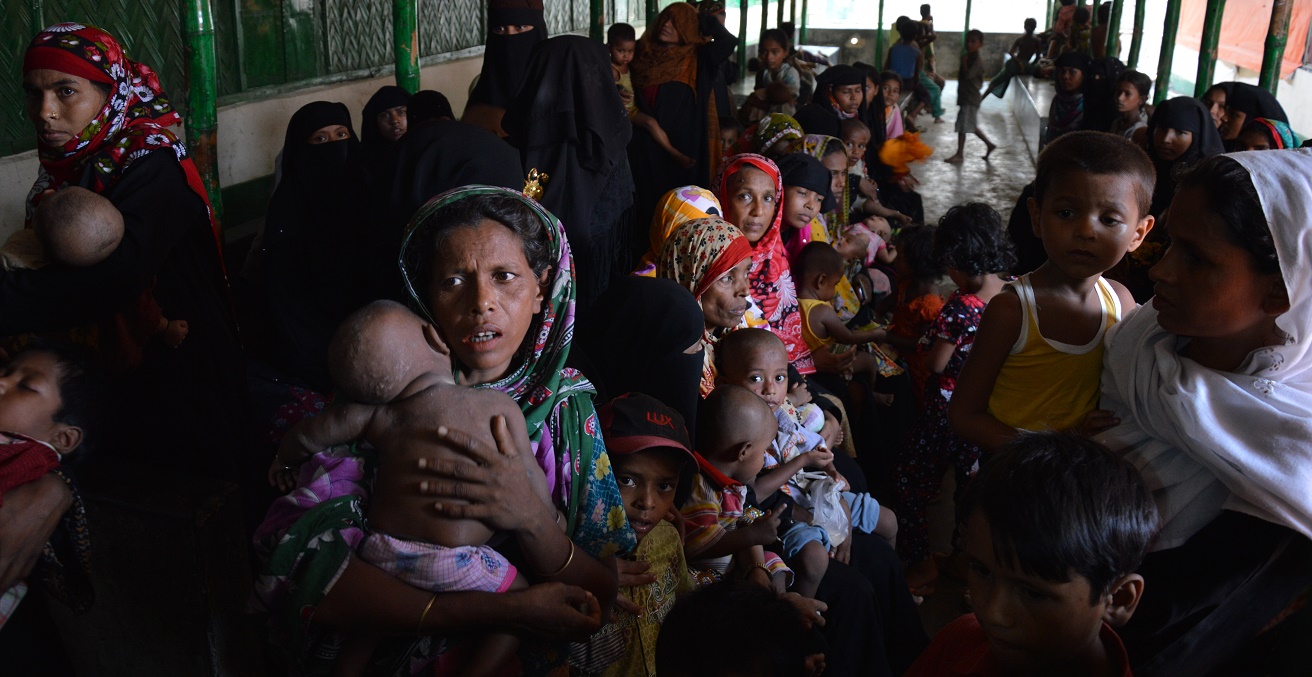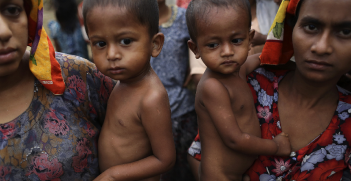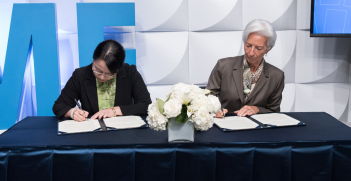Is ASEAN the Solution to the Rohingya Crisis?

With the international community searching for solutions to the humanitarian crisis as Rohingya Muslims flee persecution in Myanmar, many are looking to ASEAN for leadership.
On 25 August, a militant group calling itself the Arakan Rohingya Salvation Army (ARSA) attacked and killed Myanmar border guards in Rakhine state, Myanmar. The action resulted in another humanitarian crisis in the region affecting more than 400,000 self-identifying Rohingyas (who have fled to Bangladesh) as well as Hindu and Buddhist communities in Rakhine State in the west of Myanmar.
Clearing operations conducted by the Myanmar military forces against the ARSA have led to at least 1,000 deaths, including 400-500 militants, according to government and international media sources. The United Nations Special Rapporteur on Myanmar, Yanghee Lee, estimated that the number of deaths could be even higher as Rohingya refugees who have fled to Bangladesh claim that civilians, including women and children, have also been targeted.
Within Rakhine, some 4,000 non-Muslim villagers were evacuated by Myanmar forces following clashes with ARSA militants. Both the Myanmar government and Rohingya advocates have accused the other side of killing civilians, while international human rights organisations have reported the burning of Rohingya villages by Myanmar security forces and Buddhist vigilantes. They allege that the military has also committed acts of sexual violence against Rohingya women as well as firing on fleeing civilians including children.
UN Secretary General Antonio Guterres called the Rakhine crisis and the plight of the Rohingyas “catastrophic” as he expressed frustration with the government in Myanmar. For his part, UN High Commissioner for Human Rights Zeid Ra’ad al-Hussein has called the plight of the Rohingyas “a textbook example of ethnic cleansing”.
Myanmar State Counsellor Aung San Suu Kyi has been severely criticised by various UN member states and international human rights advocates for her silence and for not condemning the military’s alleged atrocities. However, some sympathetic analysts and diplomats (such as former Australian Prime Minister Kevin Rudd and US Ambassador Scot Marciel) defended Suu Kyi’s calculated silence given her domestic political constraints, including her government’s lack of power under the 2008 constitution to control Myanmar’s military.
Indeed, they argued that Senior General Min Aung Hlaing, Myanmar’s commander-in-chief, is the one ultimately responsible for how the military deals with the crisis in Rakhine and in ensuring the protection of civilians while his soldiers conduct clearing operations against ARSA militants.
In her diplomatic briefing in Naypyidaw on 19 September, Suu Kyi stressed that her government is “not afraid of international scrutiny” even though it earlier refused to issue visas to allow the three-member fact-finding UN Human Rights Committee to enter the country. She also condemned all human rights violations in Rakhine since the 25 August attacks and assured the international community that her government will take actions against all those who violated the law in accordance with international norms.
She also reiterated her government’s commitment to implement the recommendations made by the Rakhine Advisory Commission headed by former UN Secretary General Kofi Annan. However, it remains uncertain whether Suu Kyi’s National League for Democracy (NLD) government would be able to fully implement these recommendations without the cooperation of the military. General Min Aung Hlaing has questioned the commission’s impartiality and claimed that there were “factual inaccuracies” in its final report.
To further complicate matters, it appears the ARSA militant attacks were planned on the very day that the final report of the Rakhine Advisory Commission was submitted. The group’s action not only undermined the efforts of the NLD government to address the roots of the communal conflict but also contributed to further deepening the prejudice against the Rohingya community in Myanmar.
The militant attacks provided a good reason for the military to enhance its presence in Rakhine to contain the threat from ARSA and other violent extremists emanating from the border with Bangladesh. Certainly, any future attacks from ARSA against Myanmar border police and the military could only exacerbate the suffering of all affected communities.
Is there a way forward?
While the international community has the moral obligation to call out the NLD government and the military to uphold their responsibility to protect vulnerable populations in Rakhine, it is also important to enable the Myanmar government to meet the recommendations made by the Rakhine Advisory Commission. In the short to medium term, this means providing humanitarian assistance to affected communities in both Myanmar and Bangladesh to ensure their safety from violence by both militants and security forces.
In this regard, ASEAN should take the lead in shaping a regional response to the crisis in Rakhine. Specifically, its experience in engaging Myanmar during Cyclone Nargis in 2008 serves as a good template, mainly for the use of backdoor diplomacy, in encouraging both the civilian government and the military to abide by the ASEAN Charter’s principles on human protection. There are already ASEAN mechanisms, such as the Emergency Rapid Assessment Team (ERAT) set up in 2008, which can be used to coordinate with the UN in managing the Rakhine crisis.
Donor countries should also begin to seriously consider convening multilateral meetings to help Myanmar and Bangladesh build their capacities to prevent future atrocities, deter violent extremism and enable both countries to cooperate in managing their border security. In this regard, Australia and Japan could take the lead in convening such donor meetings given their experience in post-conflict peace building in Cambodia and Timor Leste.
Within Myanmar, the government should follow through with its commitment to uphold international human rights norms and cooperate with ASEAN and the international community in ensuring that an independent and impartial investigation in Rakhine takes place sooner rather than later. It should also demonstrate its commitment to uphold the rule of law by containing the spread of hate speech through social media and prosecuting those who continue to engage in violent action against Muslim groups, not only in Rakhine, but also elsewhere in the country.
These actions may be a tall order for the NLD government given the domestic sentiments about the militant attacks in Rakhine. In any event, moderate groups within Myanmar society have a significant role to play in containing the spread of violence against the Muslim community. Specifically, civil society groups and moderate religious leaders, especially those working in community-based interfaith dialogue, should be encouraged to continue their peace-building efforts and to contribute to humanitarian assistance.
Overall, the way forward in responding to the crisis in Rakhine should take into account the difficult challenges ahead for the fragile democratic transition in Myanmar. The international community needs to recognise the dilemmas faced by the NLD government: in managing civil-military relations, ending decades-old ethnic conflicts involving 17 armed rebel groups and addressing poverty and other human security issues in the country. At the same time, failure on the part of the Myanmar government in implementing the Rakhine Advisory Commission’s report will only exacerbate the communal conflict and increase the threat posed by violent extremism and radicalisation of the marginalised Muslim community. Certainly, this is not in the long-term interest of either Myanmar or its ASEAN neighbours.
Dr Noel Morada is director for regional diplomacy and capacity building at the Asia Pacific Centre for the Responsibility to Protect in the School of Political Science and International Studies at the University of Queensland.
This article is published under a Creative Commons Licence and may be republished with attribution.




